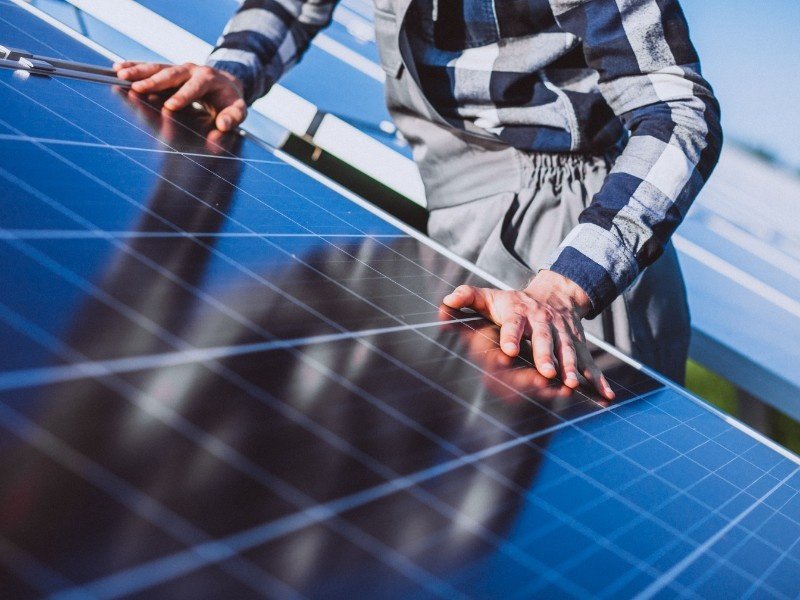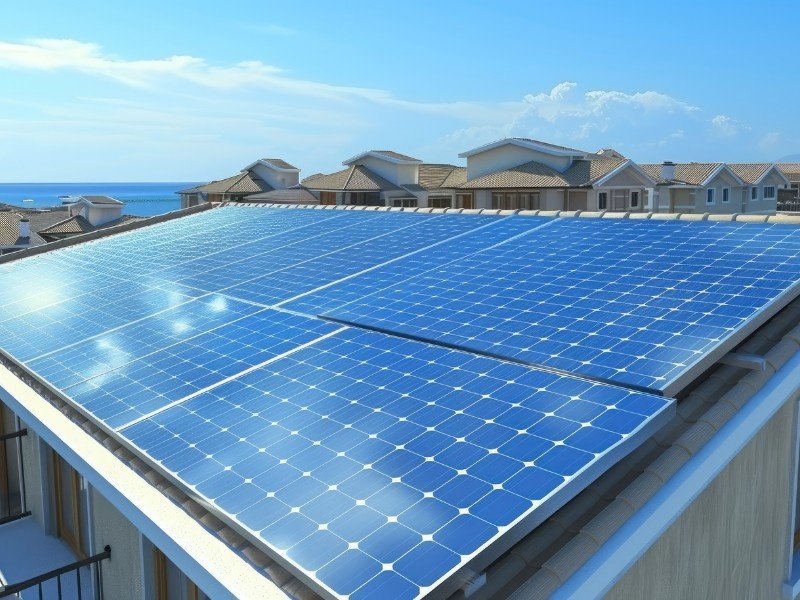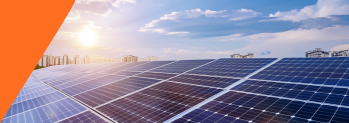Are you thinking about adding solar panels to your roof? Great choice! Solar energy is a smart way to save money on your electricity bills and help the environment. But with so many options out there, how do you know which solar panels are best for your home?
Do not worry, we have got you covered. Here is a simple guide to the top 5 solar panels for your rooftop.
TYPES OF SOLAR PANELS-
1. Monocrystalline Solar Panels: The High-Performance Option
If you want the best performance and do not mind spending a bit more, monocrystalline solar panels are your go-to choice. Here is why you would love them:
But keep in mind, these top performers come with a higher price tag. If you have limited roof space or want the most power possible, the extra cost might be worth it. They are also an excellent choice if you are looking for a long-term investment, as their high efficiency and durability can lead to greater savings over time.
Do not worry, we have got you covered. Here is a simple guide to the top 5 solar panels for your rooftop.
2. Polycrystalline Solar Panels: The Budget-Friendly Choice
Want to save some money? Polycrystalline panels would be the perfect choice for you. Here is what you need to know:
These panels are a great middle-ground option. They are more cost-effective than monocrystalline and perform well also. If you have enough roof space and want to keep costs down, polycrystalline panels would be your best bet.
3. Thin-Film Solar Panels: The Lightweight Alternative
Thin-film solar panels are different from the crystal-based ones. They are not as common for home use, but they have some unique advantages:
However, there are some drawbacks to consider. Their efficiency is lower than crystalline panels, converting only about 10-13% of sunlight into electricity. This means you will need more space for your solar installation, as you will have to install more panels to produce the same amount of power as higher-efficiency options. Additionally, thin-film panels generally do not last as long as crystalline ones, which might affect your long-term energy production and overall investment value.
Despite these limitations, thin-film panels could still be a good choice in certain situations. If you have a large, oddly-shaped roof and are not necessarily looking to maximise power output, they might be suitable. Their flexibility and lower cost per panel can make them attractive for specific installations where space is not a primary concern.
4. Mono PERC Solar Panels: The High-Tech Option
PERC stands for Passivated Emitter and Rear Cell. It is a newer technology that makes solar panels even more efficient. Here is what you should know:
The downside? They are the most expensive option. But if you want the latest technology and maximum power output, Mono PERC panels are hard to beat. Their superior performance in various conditions, including low light and high temperatures, makes them an excellent choice for those seeking top-tier solar technology regardless of their location or climate.
5. Half-Cut Cell Solar Panels: The Shadow-Resistant Choice
Half-cut cell panels are a variation of traditional mono or polycrystalline panels. Here is why they are special:
These panels are a great choice if your roof gets partial shade during the day. Not only will you maximise your energy production, but you will also benefit from their improved durability and performance. Investing in these panels ensures reliable and efficient energy generation even in less-than-ideal conditions.


How To Choose The Right Solar Panels For Your Roof?
Now that you know about the different types of solar panels, how do you choose? Here are some things to consider
- 1
Your budget: How much can you afford to spend? Remember, more expensive panels often mean more savings in the long run.
- 2
Your roof space: If you have limited space, you will want more efficient panels like monocrystalline or Mono PERC.
- 3
Your energy needs: How much electricity do you use? This will help determine how many panels you need.
- 4
Your location: Some panels perform better in hot climates, while others are better for areas with less direct sunlight.
- 5
Installation type: Are you installing on a flat roof, a sloped roof, or even on the ground? Different panels work better for different installations – with sloped roofs monocrystalline and polycrystalline panels work, with flat roofs thin-film or any crystalline panels work, on ground installations all types of panels work and on unusual roofs thin-film or half-cut cell panels work best.
Keep in mind that the “best” solar panel is the one that fits your specific needs and situation. It is a good idea to talk to a professional solar installer who can access your roof and energy needs to recommend the best option for you.




